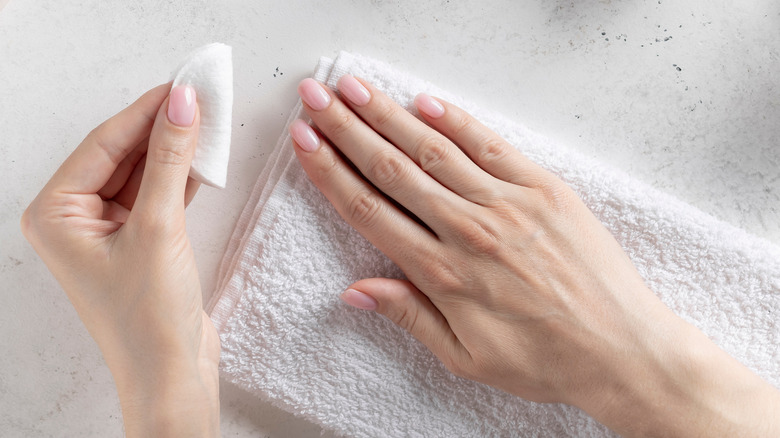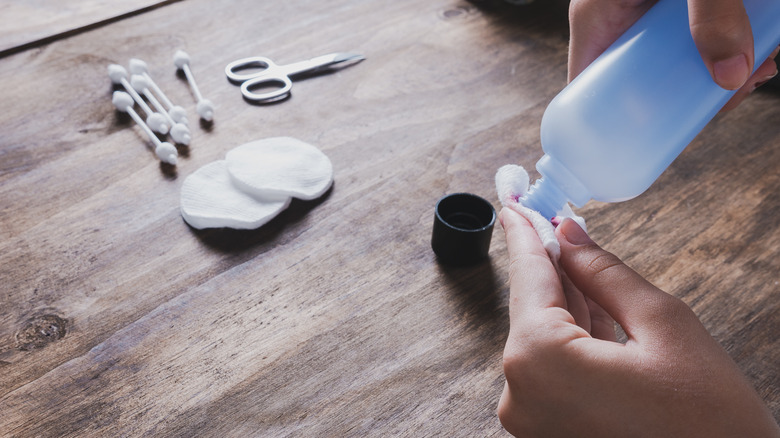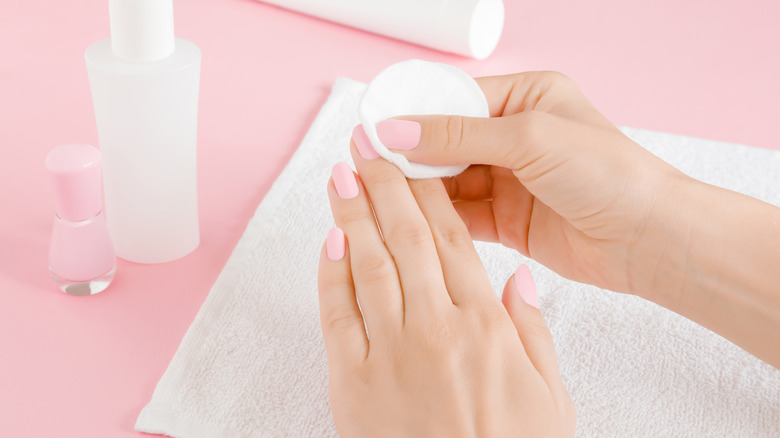The Difference Between Acetone And Non-Acetone Nail Polish Remover
Getting your nails done at the salon can be an occasional treat or it can be your regular go-to. Either way, there are always times when your nail chips or the polish wears off and you want to remove it completely without a salon visit. Even if you polish your nails yourself at home, chipping or waning nail polish can be a pain. If you have a few layers of polish on your nails, removing it will be difficult.
If you have gel polish, it will be worse. Gel manicures are created to last long but they can make your nails weak when done repeatedly (via Harper's Bazaar).
Beauty experts agree that whatever you do, you should not pick off nail polish. Beauty therapist Charlotte Every tells Insider: "Picking at the polish is bad. Picking at gel nail polish is really bad." It not only picks away the old polish but also the top layer of your nails and can lead to cracked and broken nails that are fragile, brittle, and rough.
It's best to pick a good nail polish remover that works for you.
What to know about acetone polish removers
When it comes to nail polish removers, there are some things to know about how they affect the health of your nails. While manicures are soothing and look pretty, if your nails become damaged by nail polish removers, it sort of defeats the purpose.
The two biggest distinctions among nail polish removers are those that contain acetone and those that don't. Plain and simple, removers with acetone take nail polish off more effortlessly and quickly (via Sally).
However, in exchange for efficiency, you may encounter some side effects. Removers with acetone have a very strong smell. In addition, acetone can be very drying to nails, as per Self. Celebrity manicurist Patricia Yankee says it is important to fully remove all remnants of acetone when you are done. "After you finish soaking in acetone, you want to make sure that you wash it off thoroughly." Yankee also says using cuticle oil after acetone will help to prevent the nails from drying out.
Non-acetone polish removers have benefits and drawbacks
If you're using a non-acetone remover after only having used acetone removers in the past, you may be in for a letdown because it may very well seem like the nail polish won't ever come off.
While acetone is not added to nail polish, the solvents in non-acetone removers are, and typically composed of butyl acetate and ethyl acetate, as per Nails. Non-acetone removers are oil-based and work much more slowly.
On the flip side, since they are oil-based, they are much less corrosive than acetone and actually nourish your nails. Although, if you apply nail polish right away after using an oil-based remover, you may have a problem. Nail artist Julie Kandalec tells Refinery29, "Non-acetone removers leave significant traces of oils on the nail, which you may have to remove with alcohol or acetone."
However, if you don't plan to add nail polish right away, a non-acetone remover is a good way to nurture your nails.


